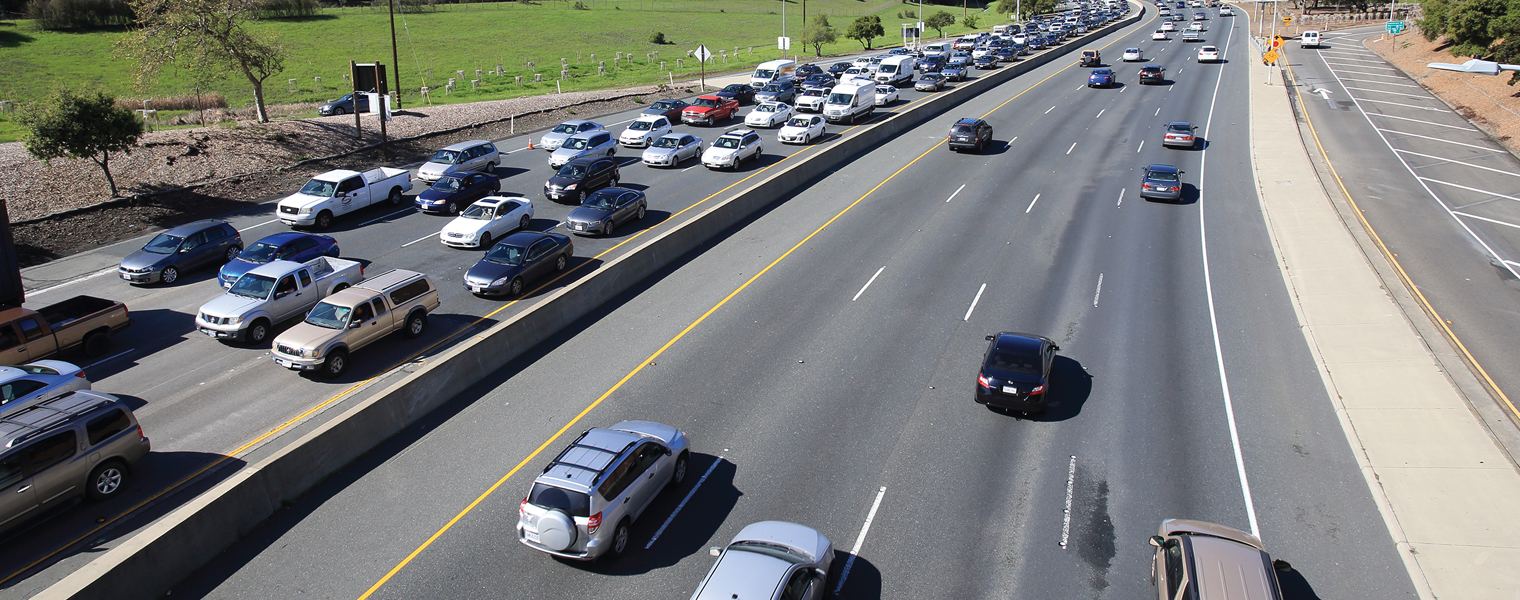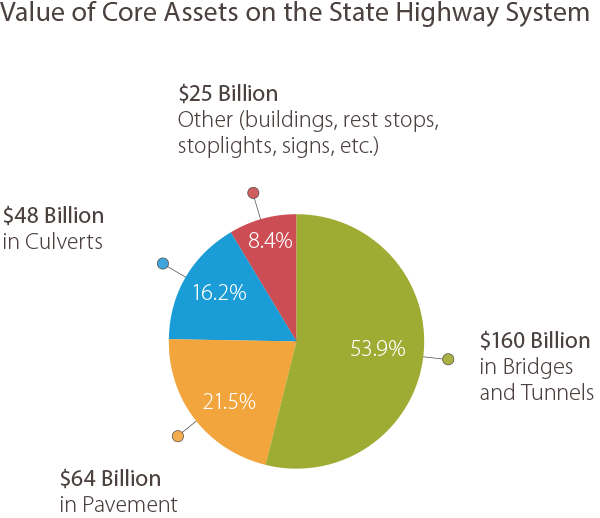Plan Identifies Highway System Needs, Fixes
Caltrans Should Spend $54.2 Billion Over Next Decade to Reach SB 1 Goals

Caltrans’ latest State Highway System Management Plan lays the groundwork for continuing improvements to California’s transportation network, which is already in a better place than when the report was last released in 2017.
The 2019 management plan delivers an up-to-date evaluation on the many physical parts that make up the state highway network, and estimates how much money and work will be needed to meet performance improvement targets set for those assets through 2029.
The difference between 2017 and this year, of course, has been the passage of the Road Repair and Accountability Act of 2017 (Senate Bill 1). The landmark transportation funding law is projected to raise $54 billion in fuel taxes and vehicle license fees through 2027, an amount split between the state and local agencies.
The 2019 management plan is the first to reflect the early accomplishments for the additional SB 1 funds, and gives greater detail on the improvements needed ahead to comply with the new law.
The plan proposes investing $54.2 billion through 2029 on the maintenance and rehabilitation work needed to satisfy SB 1 performance baselines for critical asset categories, to improve overall highway conditions, and offset the inevitable wear and tear on components. With the help of SB 1 revenues, Caltrans expects to fix or replace more than 17,00 lane miles of pavement, 500 bridges, 55,000 culverts and 7,700 transportation management system units by 2027.
Major capital projects take precedence
The investment plan calls for spending most of the projected revenues, $47.1 billion, on major capital projects through the State Highway Operation and Protection Plan (SHOPP). The SHOPP, comprised of various revenue sources in addition to SB 1, is the primary state transportation fund used to upgrade highway safety, rehabilitate or replace physical assets, improve the operation of highways, improve system resiliency, and mitigate transportation-related environmental impacts.
Based on a needs assessment, the plan identifies pavement rehabilitation and repair ($18 billion), safety-related measures ($5.9 billion), bridge condition improvements ($3.7 billion), drainage ($2.4 billion), and upgrades to transportation management systems ($2.2 billion) as areas deserving the most SHOPP funding in the next 10 years. Outside of safety — which is always the Department’s highest priority — the remaining four core categories of highway infrastructure are subject to SB 1 performance goals that should be met or surpassed if funding recommendations are followed, the plan says.
The remainder of the non-SHOPP revenues, expected to be $7.1 billion, would finance maintenance activities through 2029. Those programs focus on preventive steps to extend the life of pavement, bridges and tunnels, drainage networks, and transportation management systems.
The 2019 highway management plan reflects the needs of all travelers by including the first estimates of bicycle, pedestrian and transit investments.
The plan notes Caltrans’ continuing implementation of the Complete Streets model of more pedestrian- and bicycle-friendly highway design (see story, page 24), environmental stewardship programs that promote fish passage and wildlife crossings, proactive climate change adaptation for vulnerable parts of the transportation system, and freight mobility efforts that are environmentally responsible.
A plan tied to performance
The 2017 management plan represented a significant departure in Caltrans’ planning process in managing the state transportation system. Instead of using a program-by-program approach, the Department adopted a system-wide method tied to performance targets and broader goals laid out in Caltrans’ 2015-2020 Strategic Management Plan.
It also adopted the national performance metrics of a good-fair-poor rating system to evaluate highway assets, and called for a shift of some decision-making powers from Caltrans headquarters to regional districts better suited to address local issues and constituent needs.
The 2019 management plan carries forward and expands on those major changes. It updates the inventory of state highway assets and rates their condition on the good-fair-poor scale. From those conclusions, a needs assessment ultimately assigns each asset category a performance target necessary to reach “state of good repair” objectives.
The plan then describes the steps and the money needed to put the required improvements in place by 2029. It also emphasizes how planners must factor in the life cycle of the physical materials before making decisions, and consider the risks to the Department and transportation network as a result of those choices.
Although SB 1 revenues have only been flowing for a short time, they’re already strengthening the foundation of the State Highway System, particularly pavement condition. Since late 2017, Caltrans has paved almost 1,500 lane miles within the State Highway System, repaired or replaced 115 bridges, and completed more than 100 construction projects. Hundreds more repair and rehabilitation projects are in the construction pipeline, and numerous project timelines have been accelerated to quicken the pace of improvements and reduce costs.
Prior to the passage of SB 1, available transportation funding for the SHS met about 25 percent of the identified annual need. With the additional revenues, annual funding relative to need has more than doubled to 56 percent.

Increased revenues still fall short of total fix
However, the management plan notes that even with the increased revenues from SB 1, it’s not feasible to fund every identified need on the State Highway System. The reality is that it would take an estimated $90.4 billion to complete all needed work on the state transportation network in the next decade.
With an expected total of $54.2 billion to work with, Caltrans, and the California Transportation Commission, must act with constraint in their spending choices. The management plan recommends a path that prioritizes spending on projects and programs subject to SB 1 performance objectives — pavement, bridges and tunnels, drainages and traffic management systems — and to selectively fund less critical highway assets.
Source: 2019 State Highway Management Plan; Michael B. Johnson, Manager, Caltrans Asset Management
- Director's Message
- Shining a Light on Culvert Conditions
- ‘Signals, Signs and Sensors’ High on Fix-It List
- New Life for Old Stretch of 99
- Mileposts
- After the Devastation, a Safer Highway System
- Search for Cost Savings Pays Off
- Taking a Turn Toward Active Transportation
- Construction Turns to Tablets for Efficiency
- Plan Identifies Highway System Needs, Fixes
- New Inspector General Keeps Watch

